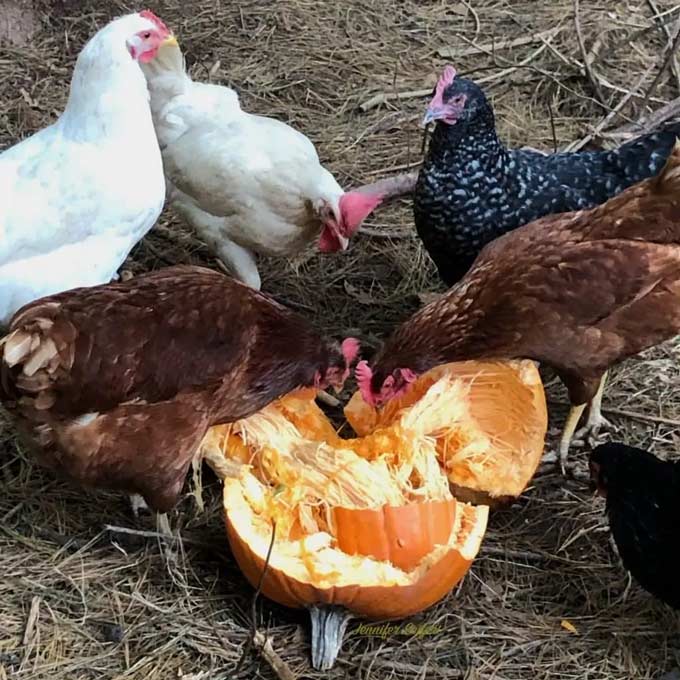In the tranquil days of November, Jennifer Seifert found herself facing a dilemma, surrounded by perfect, lingering Halloween pumpkins. A pang of guilt echoed through her thoughts: “They’re still flawless, and Thanksgiving is upon us.
What should I do with them?” In 2017, as she purchased eggs from a local farmer in the serene expanse of Loudoun County, Virginia, a simple inquiry transformed into inspiration. She asked the farmer if he could find a purpose for these aging pumpkins, and he enthusiastically replied, “Of course, my animals would love them!”
This casual exchange marked the inception of “Pumpkins for Pigs,” an online compendium of U.S. farms open to pumpkin donations.
While it remains primarily a one-woman endeavor, with a friend assisting in design, the website has blossomed over five years, featuring 360 farms from 37 states.
Seifert, driven by hope, states, “Every day we gain a couple more farms or animal sanctuaries. I’m optimistic we’ll reach 400 this year. I want people to recognize how sustainable and achievable this is.”
The United States cultivates over two billion pounds of pumpkins annually, as per the USDA. Shockingly, over half of this bounty ends up in landfills instead of being composted or consumed. Pumpkin disposal in landfills contributes to the generation of methane, a potent greenhouse gas intensifying climate change. Yet, serendipitously, animals like pigs, chickens, and goats revel in the presence of pumpkins.
Initially focusing on uncarved pumpkins, Seifert now embraces the idea of donating carved ones as well, provided they are free of oil-based paint (water-based is acceptable), unbleached, and unspoiled. As she chuckles, “I had to issue a public service announcement about the ‘no bleaching.’ Every year, you learn something new!”

Harnessing the weight of an average pumpkin, Seifert approximates that farms registered on Pumpkins for Pigs successfully diverted around 540 tons of pumpkins from landfills last year.
Beyond farms, certain U.S. zoos eagerly accept pumpkin donations. The Oakland Zoo collaborates with local pumpkin patches such as Moore’s Pumpkins and Fuji Melon Pumpkin Patch to absorb their surplus. During years when patch contributions dwindle, the zoo encourages Bay Area residents to contribute their uncarved pumpkins, providing details through their social media channels.
Isabella Linares, the Marketing Manager, reveals the carnivalesque delight experienced by elephants and hyenas, noting, “The hyenas rip it apart!” Zookeepers channel culinary creativity for vervet and squirrel monkeys, while lions, indifferent to pumpkins, find them repurposed as enrichment tools—concealing meat treats within.
Across the pond, in the UK, an organization champions the consumption of Halloween pumpkins by humans. Historically less inclined toward Halloween costumes, the British witnessed a surge in pumpkin waste with the festival’s growing popularity. Nine years ago, the London-based environmental organization Hubbub initiated the “Eat Your Pumpkin” campaign.
Aoife Allen, Hubbub’s director of food, fashion, and communities, sheds light on the initiative: “While the trend of carving a pumpkin had turned up here, there isn’t as much of a culture of eating pumpkins in the UK as there is in the US. We wanted to challenge that and remind people that pumpkins are food.”

In the enchanted realm of autumnal abundance, these pumpkins transcend mere decorum to reveal their secret identity—a powerhouse of nutrition. Bursting with vitamin A, fiber, and a symphony of antioxidants like beta-carotene, lutein, and zeaxanthin, these vibrant globes are not just ornamental; they’re a feast for the body.
Venturing beyond mundane campaigns, Hubbub orchestrates pumpkin revelries—festivals and soirees that herald the arrival of Halloween. A pandemic-induced intermission couldn’t stifle their spirit; this year, the celebration returns with a resounding crescendo.
Amid the diverse pumpkin varieties, the Howden reigns supreme for jack-o’-lanterns in the US. Yet, its destiny unfolds beyond the sculptor’s knife. Howden pumpkins metamorphose into pies, breads, and soul-soothing soups adorned with aromatic spices. Meanwhile, sugar pie, kabocha, and hubbard pumpkins await transformation into culinary masterpieces.
Embark on a culinary odyssey—dicing pumpkins, swathing them in olive oil and salt, then entrusting them to the alchemy of a 425-degree Fahrenheit oven. Elevate the experience by searing them in rosemary butter, crowned with pepitas and pomegranate seeds. (Kabocha, with its peel-free convenience, adds a touch of culinary whimsy!)
Jennifer Seifert, the sorceress behind Pumpkins for Pigs, imparts a mystical tip: If your local haven lacks representation on the PFP website, commune with vendors at the farmers’ market. Should they utter the incantation of interest, relay the news to Pumpkins for Pigs—an expansion of their magical network awaits. And in this enchanted culinary tapestry, Seifert’s refrain resonates: “Do donate them. Don’t let them vanish into the shadows of waste!”
